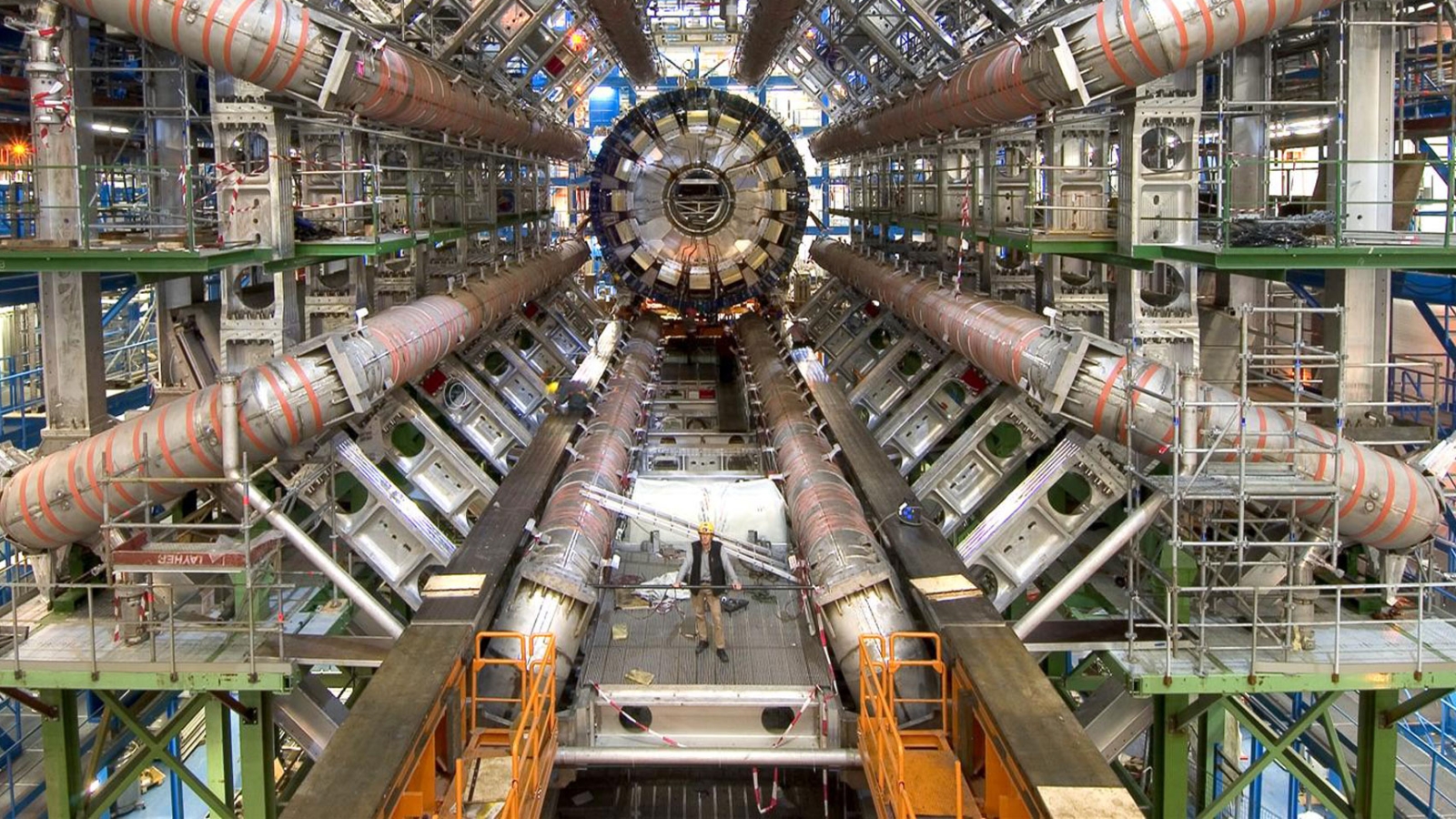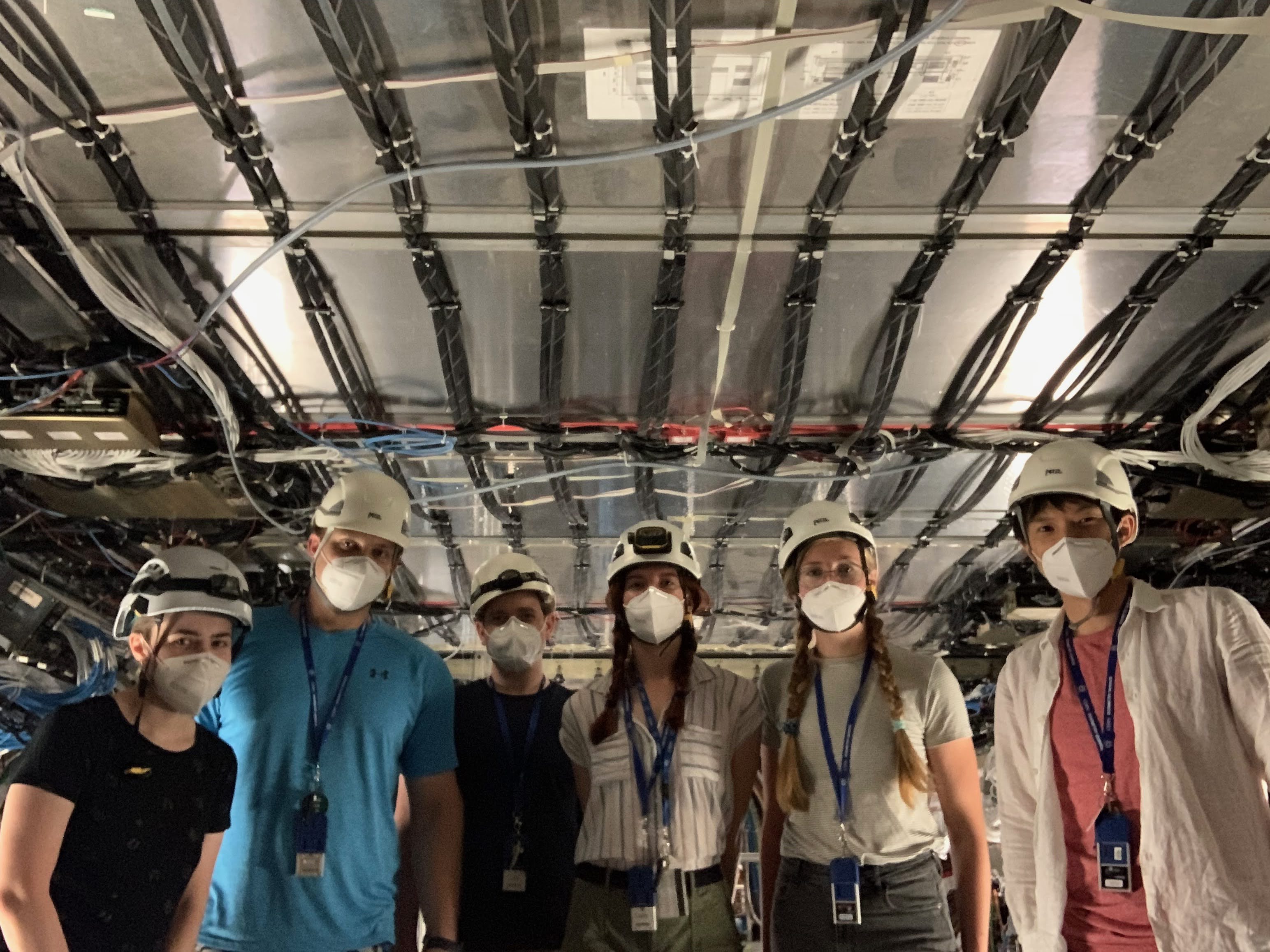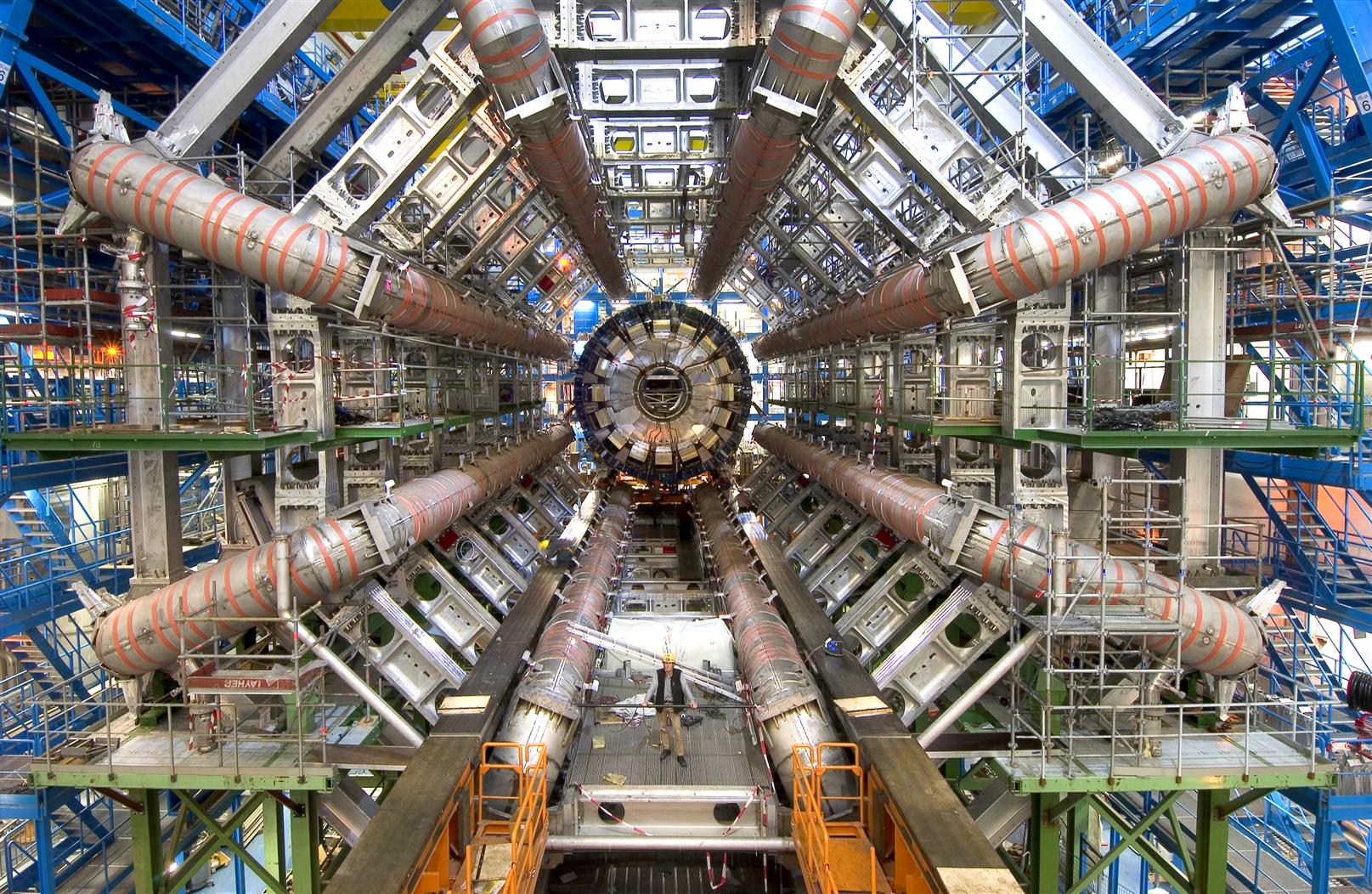OMNIA Q&A: What's It Like to Be Stationed at a Particle Accelerator?
Gwen Gardner and Lauren Osojnak, Ph.D. candidates in physics, describe their work as part of the Penn ATLAS team at the Large Hadron Collider.

On July 5, 2022, the European Organization for Nuclear Research, more commonly referred to as CERN, brought all Large Hadron Collider (LHC) systems online for its third run. This came after a three-year-long maintenance and upgrade phase, and on the tail of the 10th anniversary of one of the most significant discoveries associated with CERN: the Higgs boson, “the fundamental particle associated with the Higgs field, a field that gives mass to other fundamental particles such as electrons and quarks.”
The LHC, located in Geneva on the Franco-Swiss border, is the world’s largest and most powerful particle accelerator, a 27-kilometer ring of superconducting magnets. It speeds up and increases the energy of a beam of particles by generating electric fields that accelerate the particles, and magnetic fields that steer and focus them, which gives researchers a rare glimpse into the basic constituents of matter.
Over 600 institutes and universities around the world use CERN’s facilities. We spoke with physics doctoral students Gwen Gardner and Lauren Osojnak about what it’s like to work—and live as roommates—at one of the most scientifically advanced sites in the world. The pair are part of Penn ATLAS team, involved in the largest general-purpose particle detector experiment at the LHC.
What led to your interest in physics and CERN?
Gardner: I went into undergrad liking math and I had some interest in environmental science and art, but by the end of my first semester, it was really clear to me that the class I enjoyed the most was physics. So, I just decided to keep with it, and, coincidentally, I was also taking some French classes. My friend told me about this study abroad program with the physics department, and French was a requirement. And I was like, well, that sounds right up my alley. It sent me here, taking classes at the University of Geneva and doing some research at CERN. And once I got here, it really clicked for me. The research was creative and inspiring.
Osojnak: I had a little bit of an uncommon undergrad experience for a physics Ph.D. I went to Vassar College, which is a pretty small liberal arts school. I think there were maybe 10 of us in the physics major in my year. Definitely not a strong push to be in research either. But there’s a physicist named Sau Lan Wu who works at CERN and was a huge part of the Higgs discovery who graduated from Vassar back in the ‘60s. I found out about her from Symmetry magazine and I was like, Vassar? What? How did this happen? In my fan girl way, I emailed her, telling her I was interested in physics, also. And she called me and interviewed me on the phone, and said, “Come to CERN and do a summer internship with me.” So, the day after I graduated, I went to CERN to work with her having never taken a particle physics class.
What are you working on currently at CERN?
Gardner: What I do right now is mostly instrumentation work. It’s hands on, dealing with electronics and writing what we call low-level code, which just means that the code that we write is meant to interact with electronics and hardware. This is more along the lines of the kind of stuff you might study in electrical engineering. Most of us here learn enough of it to get by from research experience. And now Lauren and I are both getting to the point where we’re starting to focus more on finding thesis topics and doing physics analysis where we’ll take the data that comes out of our detector and apply our physics knowledge to it. So that will be more about applying what we learned in the classroom to our current work. I’m excited to work on an analysis project soon. I’ve done a little bit recently with Snowmass, which is a community effort to decide what steps we want to make next in the field. Do we build a linear collider? Do we build a circular collider? What are things looking like on the neutrino frontier, the energy frontier? Big picture questions.
Osojnak: I work on the transition radiation tracker of ATLAS. That involves a lot of time in the control room, which is really exciting, especially since the start of run three last week. I didn’t get to be in the actual control room for the first beams of Run Three, but I got to be in one of the other ATLAS buildings with a bunch of people watching it occur and cheering with everyone, which was really fun. The other half of my time is dedicated to working on a supersymmetry analysis.
What are some of the findings you hope to learn more about?
Gardner: I’m hoping to get involved in what we call invisible Higgs searches, which is basically searching for evidence that the Higgs Boson might couple to dark matter. The fundamental constituents of matter, like quarks and electrons, get their mass from the Higgs mechanism. And one of the few things that we know about dark matter is that it has mass. So, it seems like a pretty basic A to B to C kind of reasoning that the Higgs Boson should couple to dark matter, but we haven’t actually seen any evidence of this yet. Most of the issue that we have right now is just not having quite enough data. Hopefully progress will be made in the coming LHC run and then runs after that, where we’ll just gather more and more data—I hope enough to draw a conclusion.
Osojnak: I always say that what I’m doing is kind of like looking for a needle in a haystack, but not even knowing if there is a needle at all. Not everything matches up exactly as we think that it should if the standard model was the end of the story. So, one way that it could make sense is if every particle had basically a mirror image particle of itself and the standard model was doubled. That’s what super symmetry is. But there are other options. It could be that instead of having this mirror image super symmetry, there could be a mirror image with a little crack in the mirror, and that might be the missing piece. But then that begs the question of how specific do we go? If it’s a broken symmetry, maybe it’s just chaos and there is a multiverse theory and this super symmetry is just a garbage theory. The philosophical implications of it are interesting.
How will the third run of the LHC differ?
Gardner: Since I got into research here, we were in this long shutdown where the LHC was not taking any data. So most of the work that went on had to do with doing various upgrades or maintenance on the detector. So, I spent a fair bit of time underground, physically, working on the detector, replacing hardware components and such, and making sure that it’s in tip-top operating shape. And now that the run is starting, we have smaller windows where we can work on it and a bit of a greater sense of urgency, because we want our data to be in the best shape it can be.
Osojnak: This next phase, we have a ton more data coming in. All our detectors have significant improvements from the previous shutdown. Even if we didn’t have any updates to the LHC at all, we would have much more efficient computing algorithms, and better theory behind everything.
It’s really quite inspiring to feel like you have a part in something so big that’s capable of such amazing discoveries with people coming from all different backgrounds.
What is it like working for a project so well known for its worldwide collaboration?
Gardner: I think that’s one of the things that drew me to CERN in the first place. I really, really love the community here because just coming to work every day, or going to social events or clubs, you meet people from all over the world and everybody shares this passion for what they do. It’s really quite inspiring to feel like you have a part in something so big that’s capable of such amazing discoveries with people coming from all different backgrounds. CERN was founded with the purpose of being a scientific organization that can’t be leveraged for any sort of political use. That was part of the motivation for building it on a border between two countries, even. It’s really throughout its whole foundation meant to be a purely scientific collaboration, and that’s one of the things I love most about it.
Osojnak: Penn is really good at collaborating with other universities. We work with countries like Russia, Italy, the U.K. I feel like we’re taking the collaborative effort really to its highest form. I think it’s what people in the U.S. should strive for. The U.S. is not a member state at CERN, so a lot of the institutions stay on their own, but I think Penn does a really good job of integrating themselves.
Do you have a favorite memory at CERN?
Gardner: The first time that I went down to actually work in the detector, I didn’t really know what to expect. I had seen these types of detectors from the outside on tours. But when you actually crawl through it to access some electronics that are buried in there, there are little tunnels that you can barely fit through and you have to squeeze through and try not to elbow any of the wires. And you go in there with pliers and you see maybe some little Sharpie graffiti that somebody else left behind that just says, “Great work,” or something like that, or a little smiley face. I think it really kind of made me realize how many individual people’s work has gone into creating this.
Osojnak: For the 10th anniversary of the Higgs Boson discovery at CERN there was an educational screening of the documentary, “Particle Fever”. CERN director general Fabiola Gianotti and particle theorist Nima Arkani-Hamed were there to answer questions and discuss the Higgs Boson impact. A child in the audience with us, maybe 5 years old, boldly asked a question to the theorist; “how can you explain infinity?”. I think every physicist in the room saw themselves in this child and is still trying to figure out the answer to this question.




